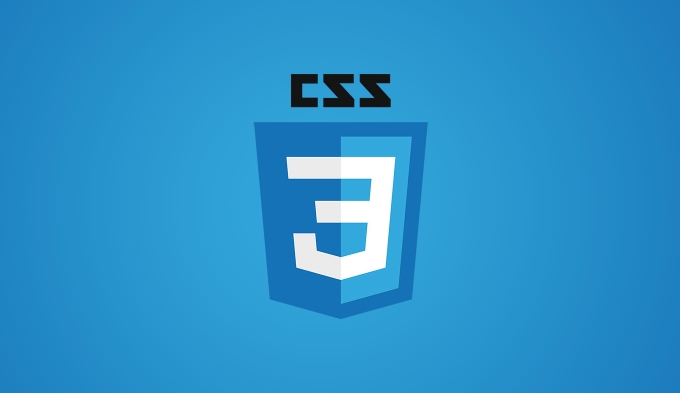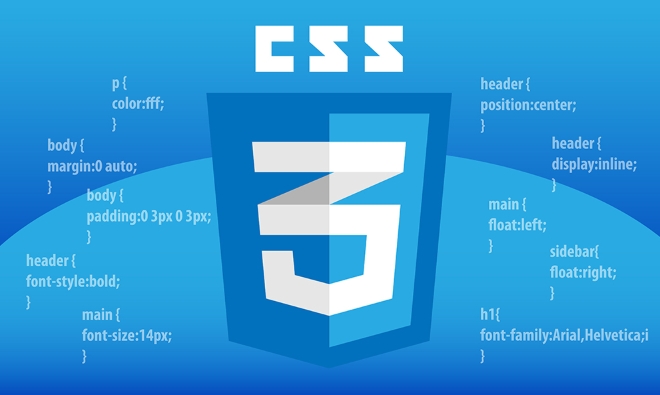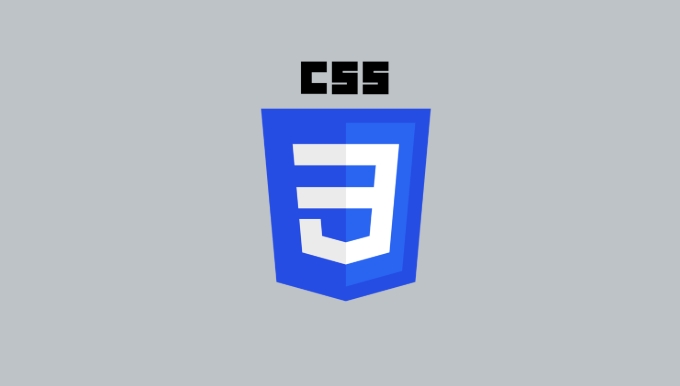opacity is an attribute in CSS that controls the overall transparency of an element, ranging from 0 (fully transparent) to 1 (fully opaque). 1. It is often used for the image hover fade effect, and enhances the interactive experience by setting the opacity transition; 2. Making a background mask layer to improve text readability; 3. Visual feedback of the control buttons or icons when disabled. Note that it affects all child elements, and unlike rgba, the latter affects only the specified color part. Smooth animations can be achieved with transition, but frequent use may affect performance. It is recommended to use them in combination with will-change or transform. Rational application of opacity can enhance the hierarchy and interactivity of the page, but it should avoid interfering with user operations and reading experience.

One of the most common ways to set transparency is to use the opacity property. It can control the degree of opacity of an element, from completely transparent to completely imperceptible to name, and is suitable for multiple scenes such as pictures, text, and backgrounds.

What is opacity
opacity is an attribute in CSS that sets the overall transparency of an element. Its value range is 0 to 1 :
-
0means complete transparency (invisible) -
1means total opaque (default) - The value in the middle, such as
0.5, means translucent
It should be noted that opacity acts on the entire element and all its child elements. That is to say, if you set opacity: 0.5 for a container, then everything inside will become transparent together.

Common uses and usage
1. Picture fade effect
In web design, we often see some images becoming more transparent when hovering, which is achieved through opacity :
img {
opacity: 1;
transition: opacity 0.3s;
}
img:hover {
opacity: 0.7;
}This allows users to feel interactive feedback while maintaining a soft visual transition.

2. Background mask layer
Sometimes we will cover the picture with a translucent black or white layer to make the text clearer. for example:
<div class="overlay"></div>
.overlay {
opacity: 0.5;
background-color: black;
}This method is often used in the text background of the banner area to improve readability.
3. Control the transparency changes of icons or buttons
When the button or icon is disabled, opacity is usually added to indicate that it is not clickable:
.button.disabled {
opacity: 0.4;
pointer-events: none;
} This not only visually prompts the user to be inoperable, but also cooperates with pointer-events to prevent interaction.
Things to pay attention to when using
- Will affect child elements : As mentioned earlier,
opacityis inherited. After the parent element has set transparency, all content inside will also be affected. - Performance issues : Frequent changes
opacityin animations may cause redrawing and re-arrangement. Although modern browsers are better optimized, it is still recommended to use it withwill-changeortransform. - Differences from rgba :
-
opacityaffects the entire element -
rgba()only affects the specified color part and will not make the text, etc. transparent
-
For example:
background-color: rgba(0, 0, 0, 0.5); /* only affects the background*/ color: rgba(255, 0, 0, 0.5); /* only affects text color*/
Tips: Progressive display hide
Combined with transition , we can achieve smooth display/hide animation:
.fade-box {
opacity: 0;
transition: opacity 0.4s ease;
}
.fade-box.show {
opacity: 1;
}Then, control the class name switching through JavaScript to achieve a fading effect.
Basically that's it. Rational use of opacity can make the page more layered and interactive, but it is not advisable to abuse it, especially be careful not to affect the user's reading or operation experience.
The above is the detailed content of Describe the `opacity` property. For more information, please follow other related articles on the PHP Chinese website!

Hot AI Tools

Undress AI Tool
Undress images for free

Undresser.AI Undress
AI-powered app for creating realistic nude photos

AI Clothes Remover
Online AI tool for removing clothes from photos.

Clothoff.io
AI clothes remover

Video Face Swap
Swap faces in any video effortlessly with our completely free AI face swap tool!

Hot Article

Hot Tools

Notepad++7.3.1
Easy-to-use and free code editor

SublimeText3 Chinese version
Chinese version, very easy to use

Zend Studio 13.0.1
Powerful PHP integrated development environment

Dreamweaver CS6
Visual web development tools

SublimeText3 Mac version
God-level code editing software (SublimeText3)

Hot Topics
 What is 'render-blocking CSS'?
Jun 24, 2025 am 12:42 AM
What is 'render-blocking CSS'?
Jun 24, 2025 am 12:42 AM
CSS blocks page rendering because browsers view inline and external CSS as key resources by default, especially with imported stylesheets, header large amounts of inline CSS, and unoptimized media query styles. 1. Extract critical CSS and embed it into HTML; 2. Delay loading non-critical CSS through JavaScript; 3. Use media attributes to optimize loading such as print styles; 4. Compress and merge CSS to reduce requests. It is recommended to use tools to extract key CSS, combine rel="preload" asynchronous loading, and use media delayed loading reasonably to avoid excessive splitting and complex script control.
 External vs. Internal CSS: What's the Best Approach?
Jun 20, 2025 am 12:45 AM
External vs. Internal CSS: What's the Best Approach?
Jun 20, 2025 am 12:45 AM
ThebestapproachforCSSdependsontheproject'sspecificneeds.Forlargerprojects,externalCSSisbetterduetomaintainabilityandreusability;forsmallerprojectsorsingle-pageapplications,internalCSSmightbemoresuitable.It'scrucialtobalanceprojectsize,performanceneed
 What are the key differences between inline, block, inline-block, and flex display values?
Jun 20, 2025 am 01:01 AM
What are the key differences between inline, block, inline-block, and flex display values?
Jun 20, 2025 am 01:01 AM
Choosing the correct display value in CSS is crucial because it controls the behavior of elements in the layout. 1.inline: Make elements flow like text, without occupying a single line, and cannot directly set width and height, suitable for elements in text, such as; 2.block: Make elements exclusively occupy one line and occupy all width, can set width and height and inner and outer margins, suitable for structured elements, such as; 3.inline-block: has both block characteristics and inline layout, can set size but still display in the same line, suitable for horizontal layouts that require consistent spacing; 4.flex: Modern layout mode, suitable for containers, easy to achieve alignment and distribution through justify-content, align-items and other attributes, yes
 What is Autoprefixer and how does it work?
Jul 02, 2025 am 01:15 AM
What is Autoprefixer and how does it work?
Jul 02, 2025 am 01:15 AM
Autoprefixer is a tool that automatically adds vendor prefixes to CSS attributes based on the target browser scope. 1. It solves the problem of manually maintaining prefixes with errors; 2. Work through the PostCSS plug-in form, parse CSS, analyze attributes that need to be prefixed, and generate code according to configuration; 3. The usage steps include installing plug-ins, setting browserslist, and enabling them in the build process; 4. Notes include not manually adding prefixes, keeping configuration updates, prefixes not all attributes, and it is recommended to use them with the preprocessor.
 How can you animate an SVG with CSS?
Jun 30, 2025 am 02:06 AM
How can you animate an SVG with CSS?
Jun 30, 2025 am 02:06 AM
AnimatingSVGwithCSSispossibleusingkeyframesforbasicanimationsandtransitionsforinteractiveeffects.1.Use@keyframestodefineanimationstagesforpropertieslikescale,opacity,andcolor.2.ApplytheanimationtoSVGelementssuchas,,orviaCSSclasses.3.Forhoverorstate-b
 What is the conic-gradient() function?
Jul 01, 2025 am 01:16 AM
What is the conic-gradient() function?
Jul 01, 2025 am 01:16 AM
Theconic-gradient()functioninCSScreatescirculargradientsthatrotatecolorstopsaroundacentralpoint.1.Itisidealforpiecharts,progressindicators,colorwheels,anddecorativebackgrounds.2.Itworksbydefiningcolorstopsatspecificangles,optionallystartingfromadefin
 What is the scope of a CSS Custom Property?
Jun 25, 2025 am 12:16 AM
What is the scope of a CSS Custom Property?
Jun 25, 2025 am 12:16 AM
The scope of CSS custom properties depends on the context of their declaration, global variables are usually defined in :root, while local variables are defined within a specific selector for componentization and isolation of styles. For example, variables defined in the .card class are only available for elements that match the class and their children. Best practices include: 1. Use: root to define global variables such as topic color; 2. Define local variables inside the component to implement encapsulation; 3. Avoid repeatedly declaring the same variable; 4. Pay attention to the coverage problems that may be caused by selector specificity. Additionally, CSS variables are case sensitive and should be defined before use to avoid errors. If the variable is undefined or the reference fails, the fallback value or default value initial will be used. Debug can be done through the browser developer
 CSS tutorial focusing on mobile-first design
Jul 02, 2025 am 12:52 AM
CSS tutorial focusing on mobile-first design
Jul 02, 2025 am 12:52 AM
Mobile-firstCSSdesignrequiressettingtheviewportmetatag,usingrelativeunits,stylingfromsmallscreensup,optimizingtypographyandtouchtargets.First,addtocontrolscaling.Second,use%,em,orreminsteadofpixelsforflexiblelayouts.Third,writebasestylesformobile,the






